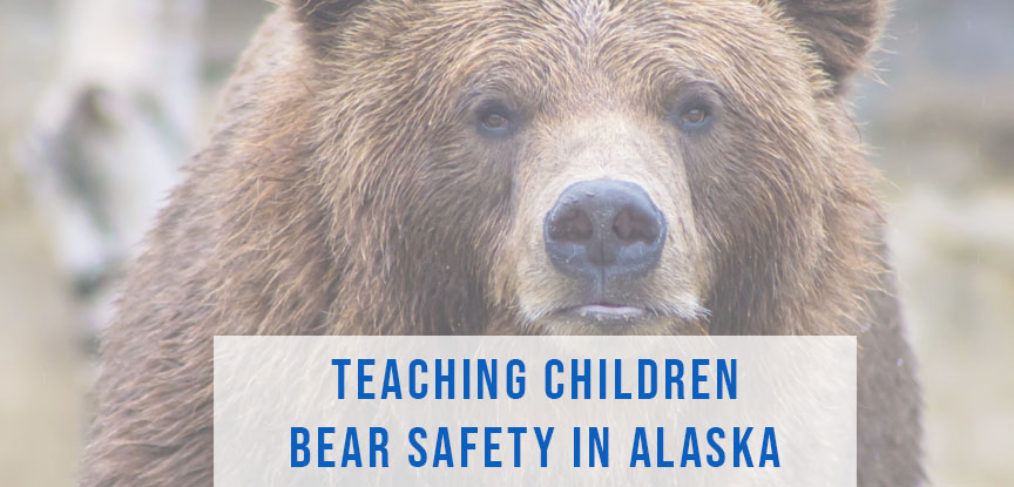
Teaching children bear safety in Alaska
Whether you live in or are visiting Alaska, if you have children it’s important that they know the basics for safely interacting with wild animals – especially bears. The instinct to protect youngsters from danger is a essential part of parenthood. We can control some components of children’s safety in the outdoors, equipping kids with appropriate gear, knowledgeable mentors, and locations to fit their abilities. But not everything is simple, especially in Alaska where wildlife is not just nearby, but often literally in our own backyards.
It’s a sure bet for anyone living in Alaska that even if you don’t see a bear, you’re probably never far from one. Alaska is bear country, of course, with millions of acres of habitat for black, brown, and polar bears doing what bears do — eating, sleeping, and raising their own youngsters. We know black and brown bears live right here in the Anchorage Bowl, fishing in local streams and wandering the same trails we do.
That’s why it’s so important to take the time to teach everyone in the family about bear safety in Alaska – starting as early as you can. This creates a foundation for knowing how to act if (and when) the situation arises and lessening the chances of a dangerous close encounter.
How to practice good bear safety etiquette
Here are some tips for keeping your children safe from bears while exploring the beautiful Anchorage, Eagle River, Wasilla and Mat-Su Valley.
- Make noise: Loud noise is an easy safety practice in bear country. Bears don’t want to hang around humans, but they need warning to know when we’re around, so making frequent loud human noises gives them a heads up to stay away.
- Give them space: We know that bears are cool, but please respect their space and stay at least 300 yards away. You can get a really good view with some binoculars or zoom camera lenses. You should never let your children (or yourself) approach them or try to feed them! Mother and baby cubs are especially dangerous. Even though we know they look super cute, they should only be admired from a safe distance.
- Be alert: If you’re out walking around be sure that you are aware of your surroundings and not wearing headphones that block outside noise. You need to have your eyes AND ears open for signs of a bear nearby.
- Keep your pets safe: Always walk your dog on a leash, and store pet food in a bear safe container or building.
The number one way to keep yourself, and your children safe from bears and other wildlife is knowledge! Be sure to educate yourself and your children on the animals in your area. Bear safety in Alaska is very important. This will allow you to explore and appreciate the many wonders of Alaska safely!
Here are two other resources from Alaska Department of Fish and Game useful for teaching children about bear and wildlife safety:
- Coloring book: http://www.adfg.alaska.gov/static/species/livingwithwildlife/bears/pdfs/be_bear_aware_coloring_book_2016.pdf
- Alaska Department of Fish and Game calendar of bear-aware events: http://www.adfg.alaska.gov/index.cfm?adfg=education.communityevents


